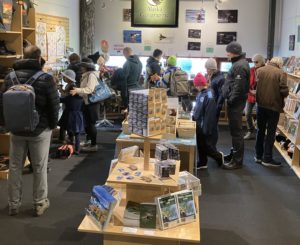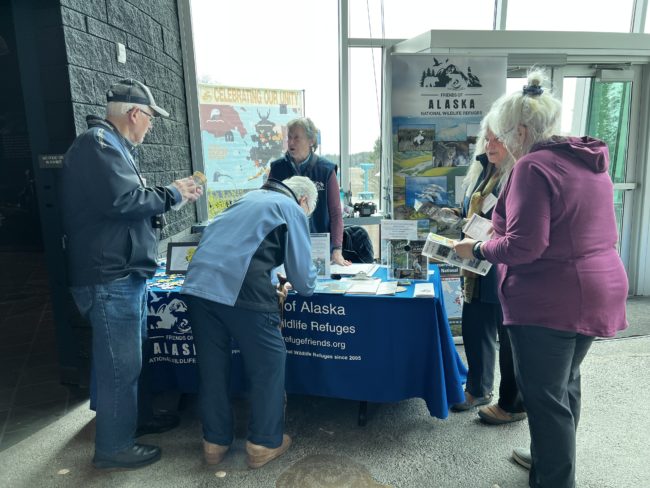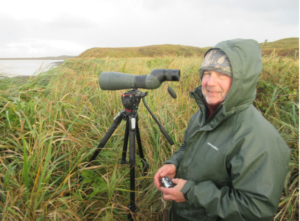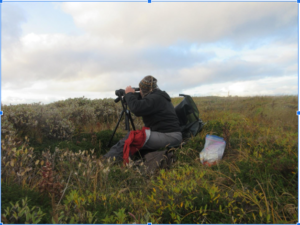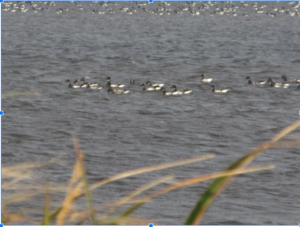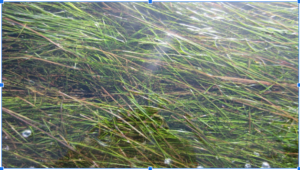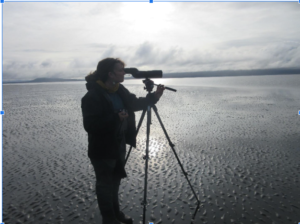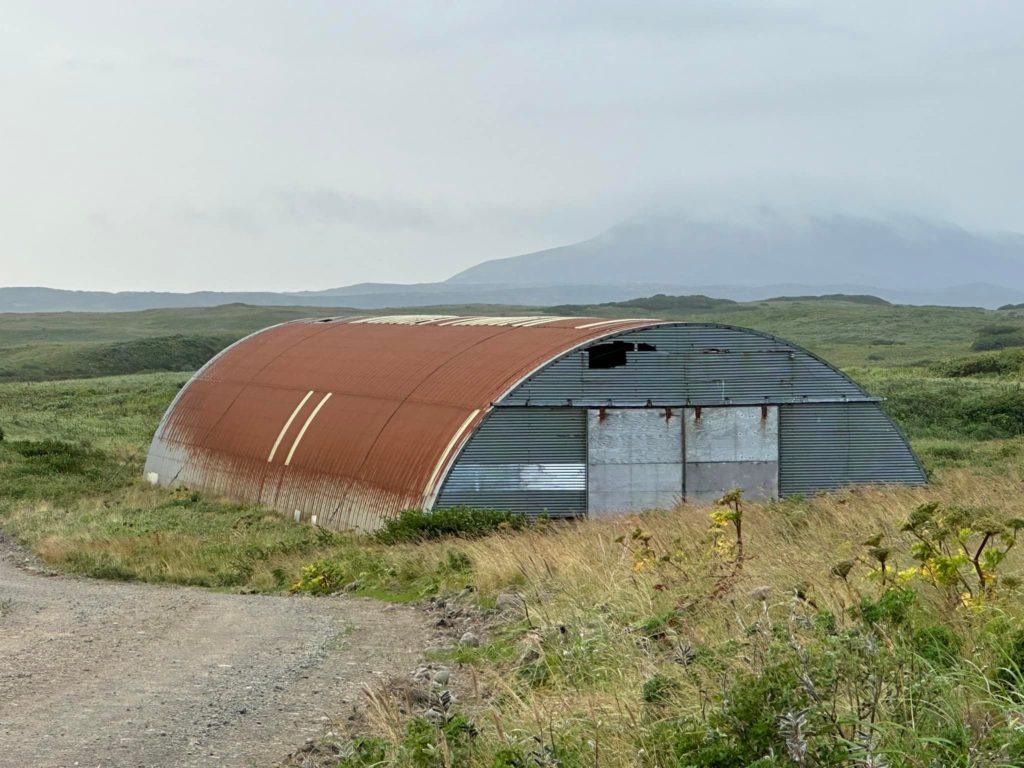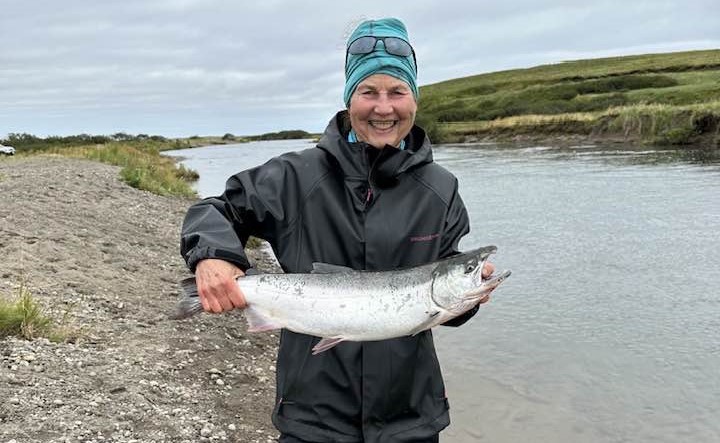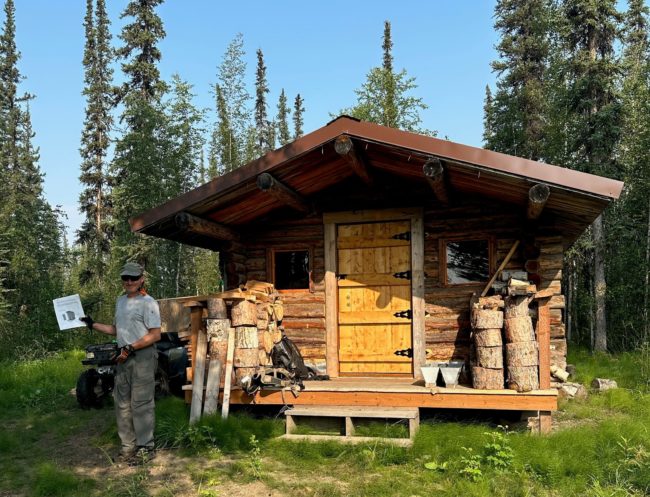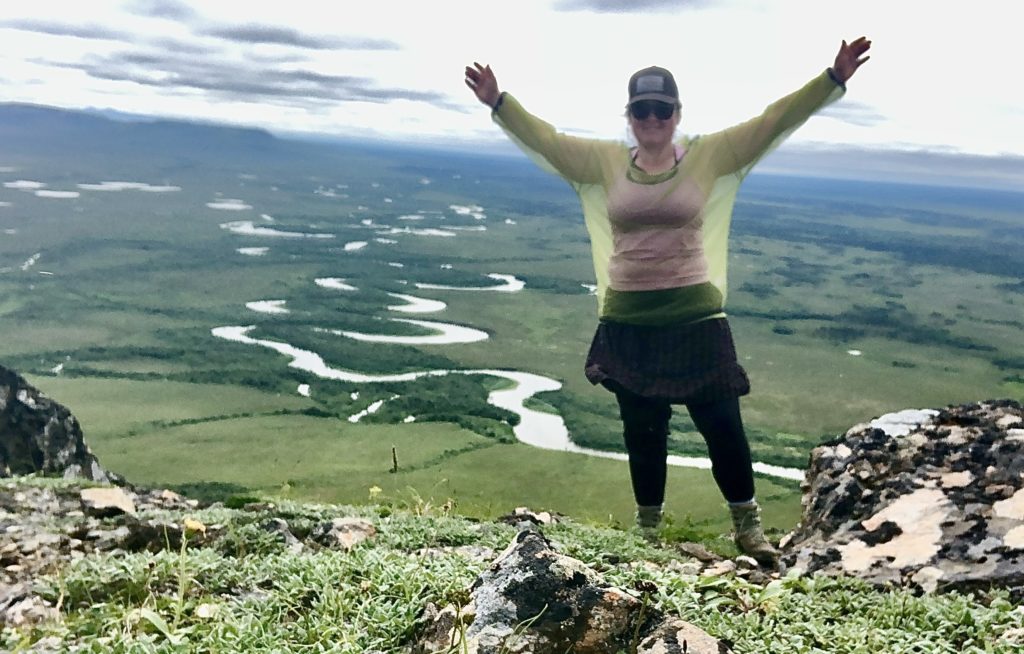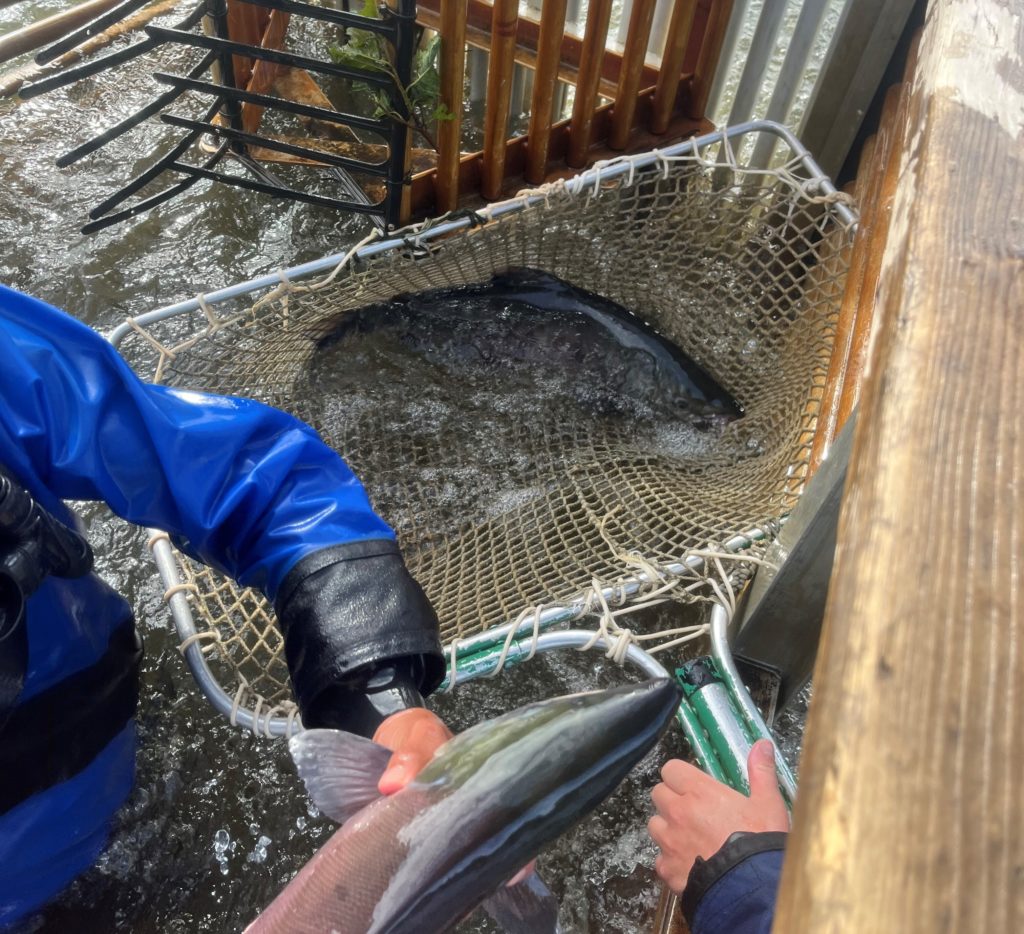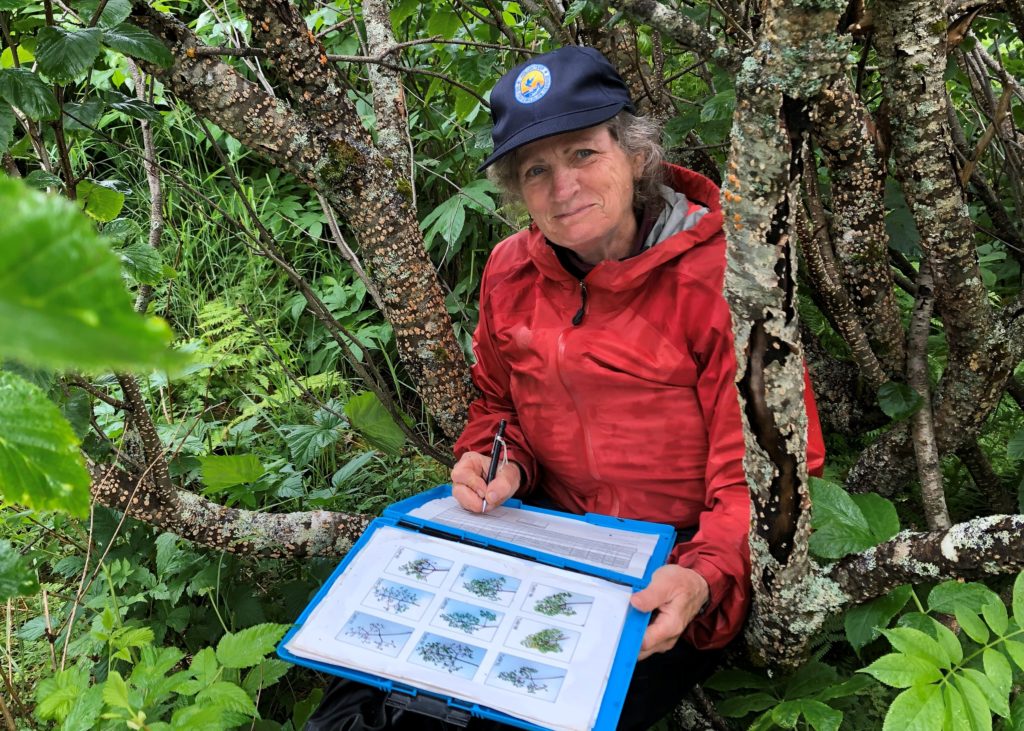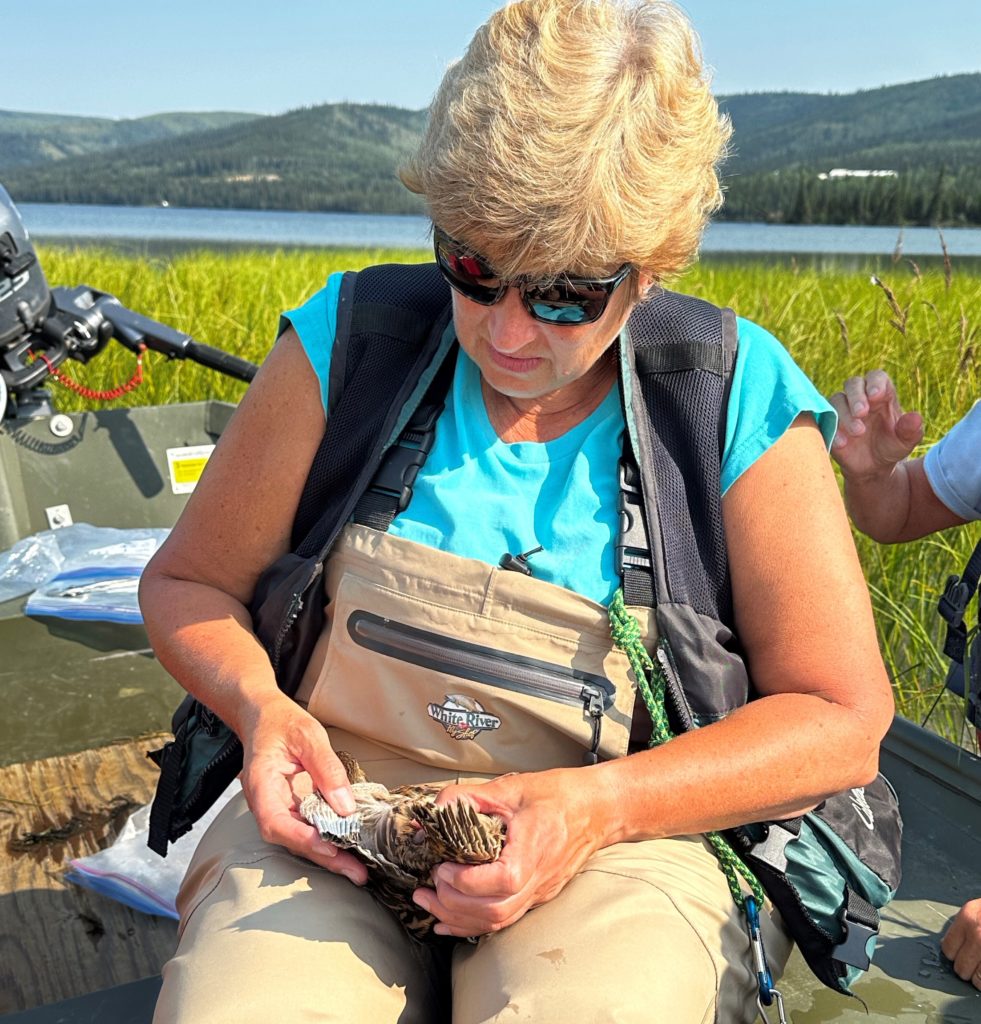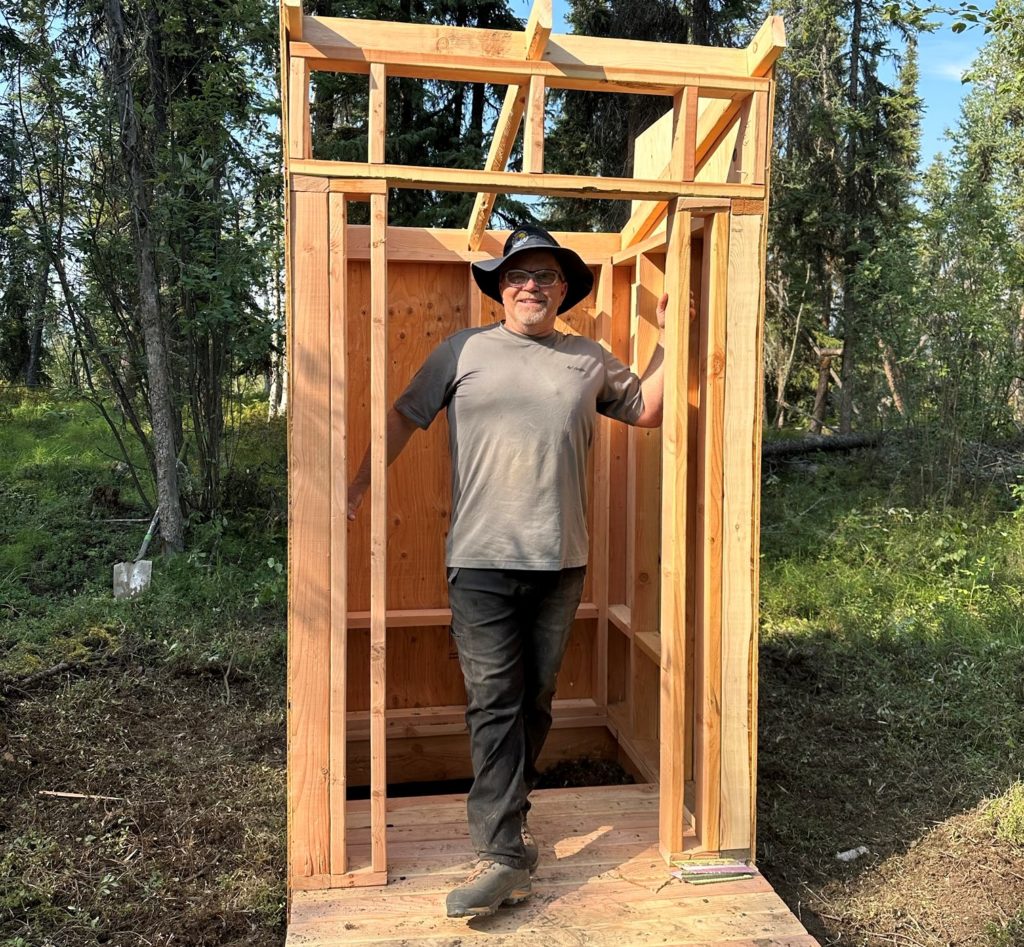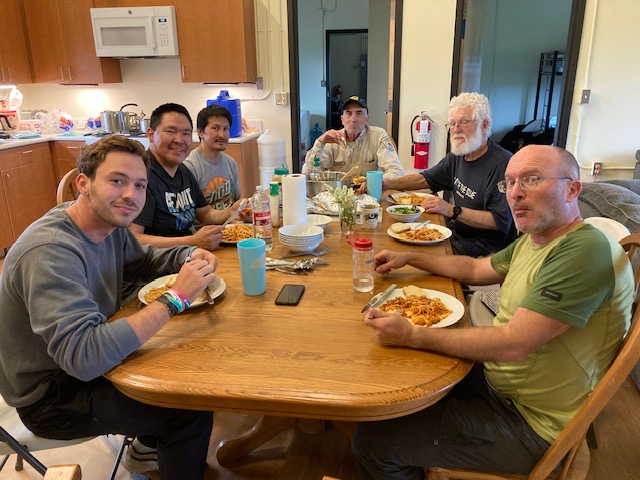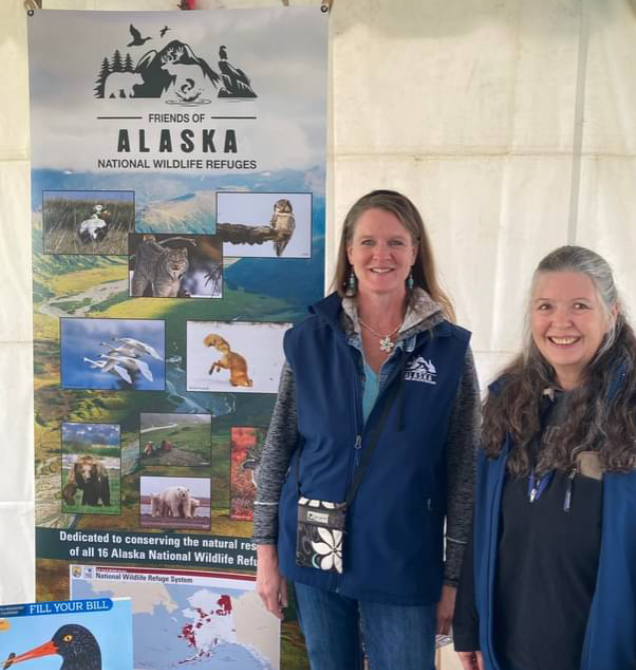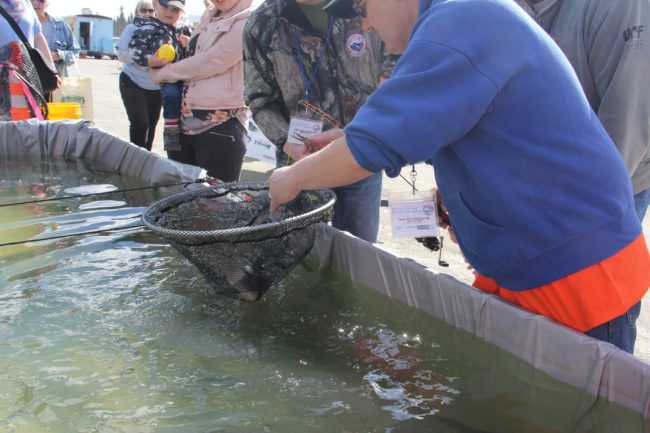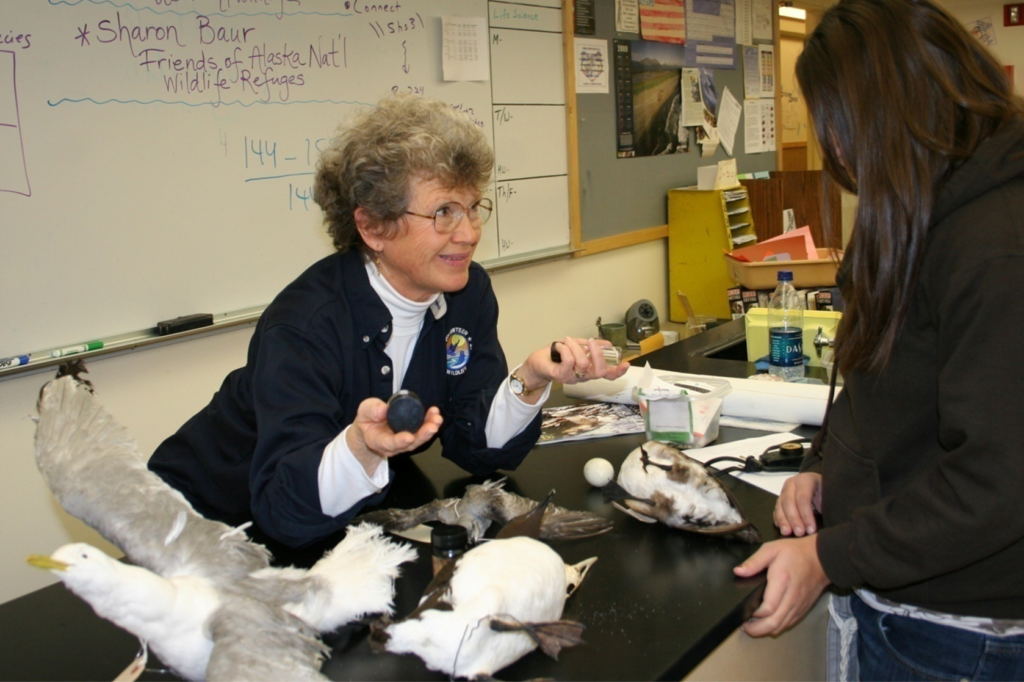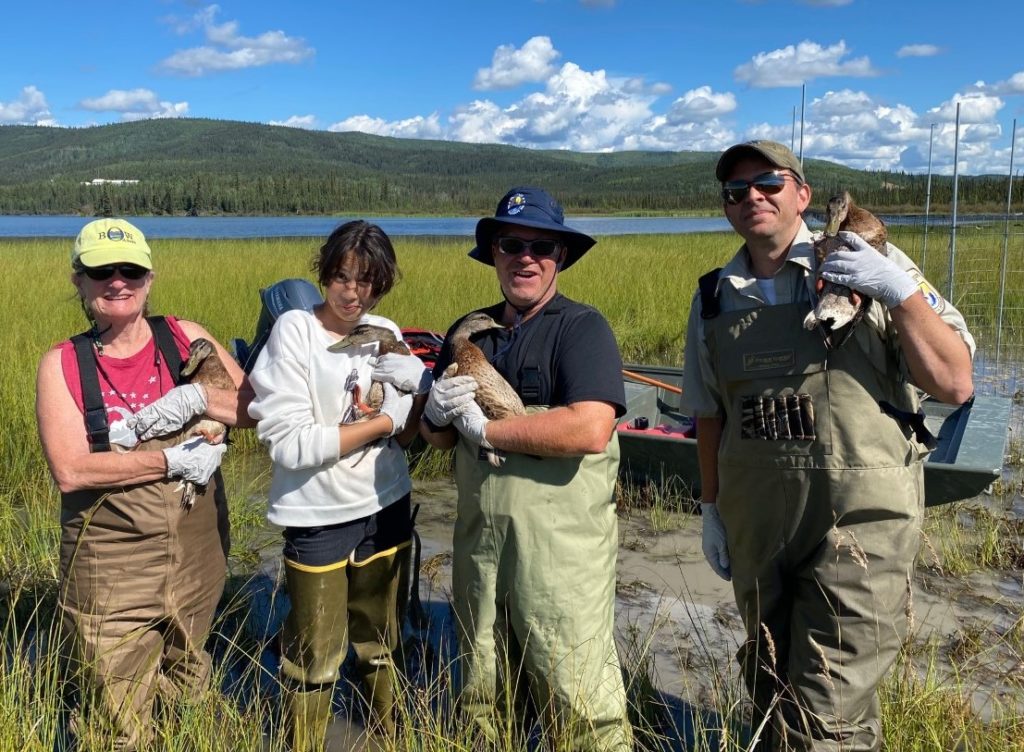Nothing like Leaping into Retirement with a Month of Volunteering at Tetlin Refuge!
By Jackie Smith, Soldotna Friends member
To be honest, I had no idea how far out the Tetlin Refuge Visitor Center was – almost to the Canadian border and 70 miles beyond Tok. But my pup Mia and I settled in to refuge housing at Northway Junction 15 miles from the visitor center where I would work. It’s hard to call the time at work “work” because everyone we met was so happy to be there – excited to get information about where they were headed or to share their experiences (especially with road conditions!).
We gave directions, reviewed maps, sold souvenirs and gifts including Native baskets and beadwork, and showed a video of the details of the refuge and its Alaska Native background. The swan exhibit, a collection of animal pelts and a display where visitors can make footprints of the various refuge inhabitants were popular and great fun for the kids! I was most impressed with how the local Native culture is such a big part of the exhibits. The two Athabascan staffers even demonstrated beading.
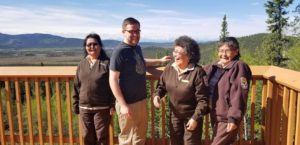 I loved having the chance to work with these ladies from the village of Northway and learn about Athabascan culture. Sylvia Pitka, Cora Demit and Marilyn Paul with a visitor on the visitor center deck with the beautiful refuge view.
I loved having the chance to work with these ladies from the village of Northway and learn about Athabascan culture. Sylvia Pitka, Cora Demit and Marilyn Paul with a visitor on the visitor center deck with the beautiful refuge view.I met most of the headquarters staff and many of the summer folks working on the refuge and in Tok, and bonded with Bill and Mary (we’re all nurses!) who came from Florida to be the hosts at the refuge campground at Deadman Lake. Including side trips to pick blueberries on the Denali Highway and visit Beaver Creek, Chicken and Dawson City, I am now able to truly appreciate smoothly-paved roads! The only thing I missed out on was the duck banding, so I might have to go back! Thanks so much for the opportunity to see eastern Alaska and the Tetlin National Wildlife Refuge. It was all quite an adventure.
Duck Banding at Tetlin Refuge is more than Just Banding Ducks!
By Lin and John Kennedy, Soldotna Friends
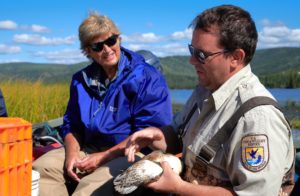
Lin Kennedy with Deputy Refuge Manager and Duck Whisperer Ross Flagen. PC Lewis Westwick
It’s the getting there, and the camping, and the people. As the trip to the refuge’s Deadman Lake campground is over 500 miles from Soldotna, we tood two days to enjoy and photograph the beautiful scenery, with time to stretch our legs and exercise our dog. On our arrival Sunday afternoon, we checked in with the campground hosts, Bill and Mary, who we knew from the year before, found our “reserved” campsite and set our trailer up for the week.
Mallard, Pintail, Green Winged Teal and Wigeon ducks were all fitted with bands throughout the week. The process generally runs fairly smooth, but there are always some bumps in the road. It was Duck – 1, Lin – 0 when I applied a band not realizing the pliers were locked open, failed to close the band, and the duck got away with the band falling to the bottom of the boat with a loud clang. As Ross Flagen, Tetlin Deputy Refuge Manager, says “It happens to everyone.”
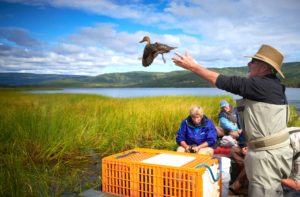 Our mornings and early afternoons were spent at Deadman and Yarger lakes checking the duck traps and working through the ducks that were trapped. Ducks that were already banded were released and the newbies were held in bright orange crates waiting for their turn to receive their beautiful new ankle bracelet. John Kennedy releasing banded duck. PC. Lewis Westwick.
Our mornings and early afternoons were spent at Deadman and Yarger lakes checking the duck traps and working through the ducks that were trapped. Ducks that were already banded were released and the newbies were held in bright orange crates waiting for their turn to receive their beautiful new ankle bracelet. John Kennedy releasing banded duck. PC. Lewis Westwick.By midafternoon we were usually finished and free to explore and enjoy Tetlin Refuge. Deadman Lake campground offers quiet, large, spaced-out sites, canoes complete with paddles and PFDs free to use, free firewood and a short boardwalk complete with a viewing platform on the lakeshore. Blueberries are abundant in season for picking and spicing up the morning pancakes.
The Seaton Roadhouse site, east of Deadman Lake on the AlCan, offers panels with historical information, trails with viewing decks and benches, and a beaver pond with many ducks and even a pair of swans the afternoon we visited. And of course, a visit to Tetlin Refuge would not be complete without a visit to the visitor center. The staff was very friendly. The deck of the visitor center offered wonderful valley and mountain views.
We experienced beautiful sunshine and blue skies most days, with a chill in the air in the mornings that could only mean one thing: fall is on the horizon. Before we knew it our week at Deadman Lake ended and it was time to head back to Soldotna.
I frequently comment, “we are not birders.” After two years of participating in this worthwhile project, perhaps we are.
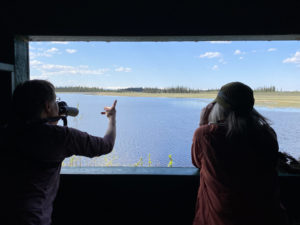
The Refuge’s Lakeview campground on Yarger Lake just west of Deadman is smaller but has a great viewing blind. PC Poppy Benson
In addition to the Kennedys, Dan Musgrove, Soldotna; Barbara O’Donnell, Fairbanks; Lewis Westwick, Danny Moss, Susan Moeller, and Deborah Vandruff, all of Anchorage also volunteered for a week of duck banding.
Indispensable Dan
From Volunteer to Employee
By Poppy Benson, Vice President for Outreach
 One of Friends most hard working, most cheerful and all around good guy volunteers is Dan Musgrove of Soldotna. These Dan characteristics were not lost on the Tetlin Refuge staff particularly Deputy Manager Ross Flagen. Dan had volunteered three times for the Tetlln Refuge – two weeks of duck banding and other duties as assigned and a winter gig via snowmachine to chop wood and get remote cabins ready for the summer. So Ross knew Dan could work. When the frustrating government hiring system failed to find candidates for all the summer positions Tetlin needed, Ross figured out a way to hire Dan as a 30-day emergency hire. This retired oil field worker put on the brown uniform and became a ranger! Dan did mostly maintenance work for that month but he still wasn’t tired of Tetlin. He returned in August to volunteer for another week of duck banding. Now that is helping out a refuge in need!
One of Friends most hard working, most cheerful and all around good guy volunteers is Dan Musgrove of Soldotna. These Dan characteristics were not lost on the Tetlin Refuge staff particularly Deputy Manager Ross Flagen. Dan had volunteered three times for the Tetlln Refuge – two weeks of duck banding and other duties as assigned and a winter gig via snowmachine to chop wood and get remote cabins ready for the summer. So Ross knew Dan could work. When the frustrating government hiring system failed to find candidates for all the summer positions Tetlin needed, Ross figured out a way to hire Dan as a 30-day emergency hire. This retired oil field worker put on the brown uniform and became a ranger! Dan did mostly maintenance work for that month but he still wasn’t tired of Tetlin. He returned in August to volunteer for another week of duck banding. Now that is helping out a refuge in need!


